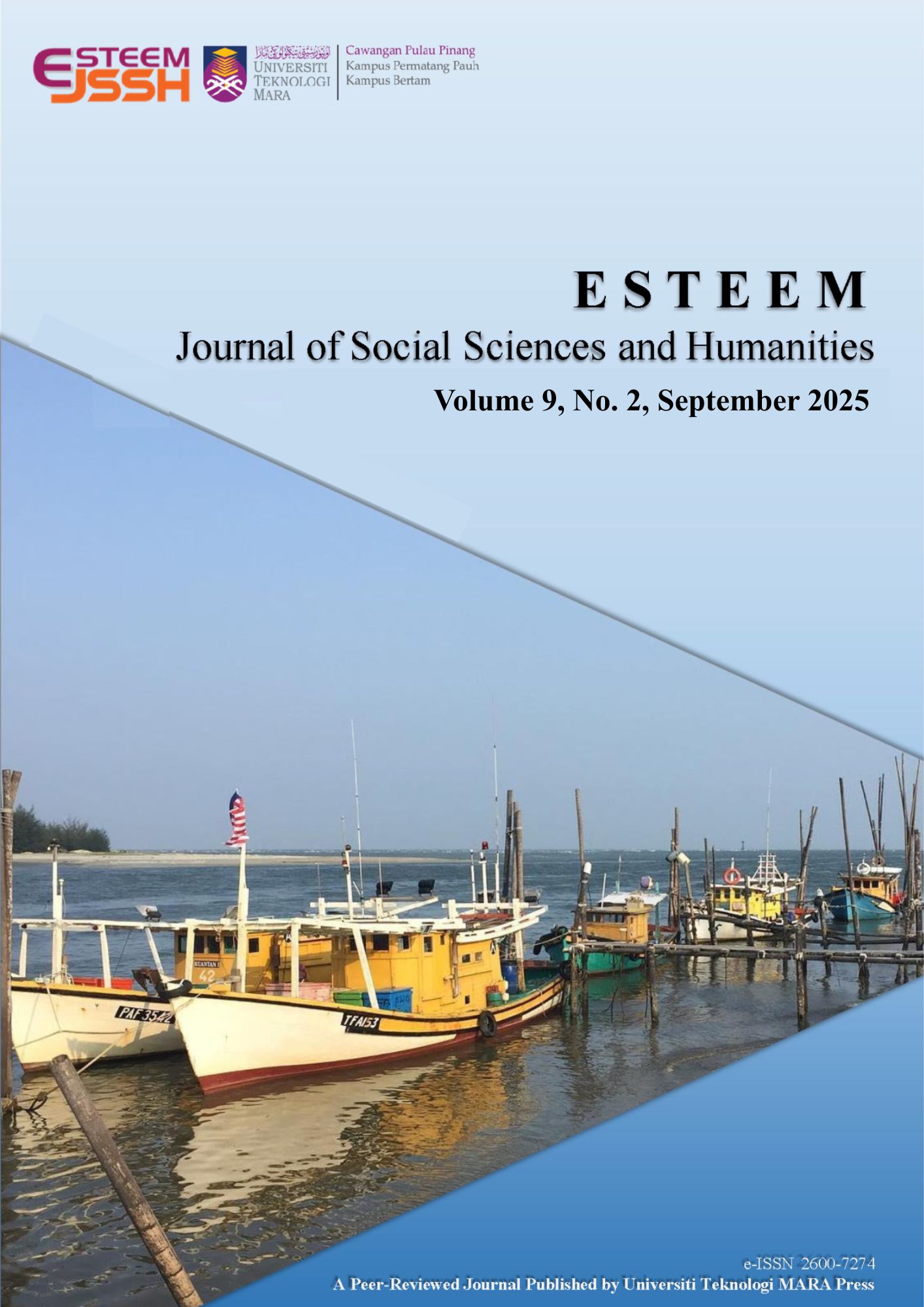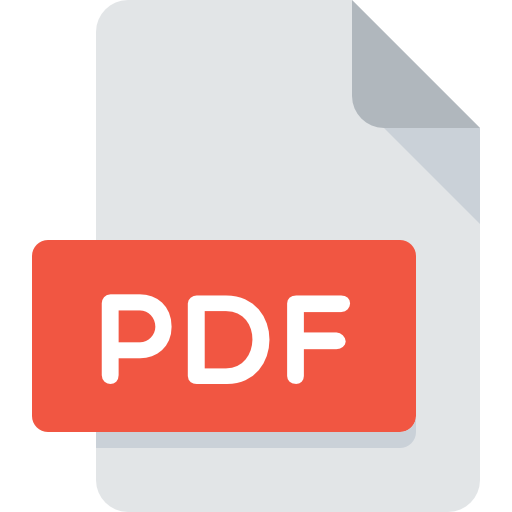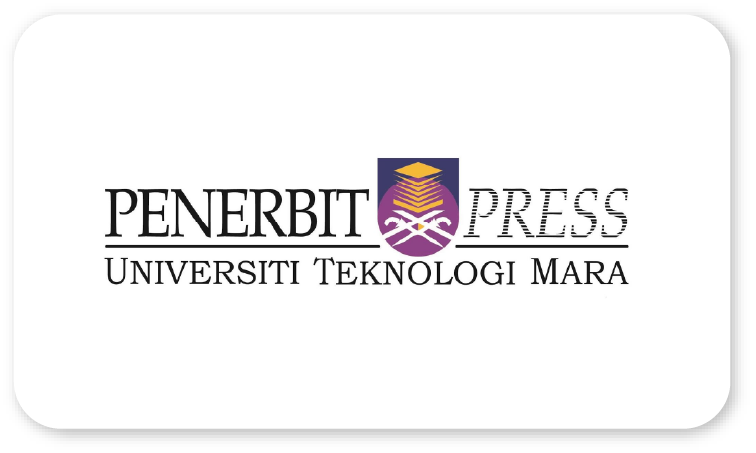
‘No Plastic Bag Day’ campaign in Selangor: Effects on consumers’ attitudes and behaviours
Shantakumari Rajan
Centre for Environmental Health and Safety Studies, Faculty of Health Sciences, Universiti Teknologi MARA Puncak Alam Campus, 42300 Bandar Puncak Alam, Selangor, Malaysia
Nor Farrahanim Mohd Nasir
Centre for Environmental Health and Safety Studies, Faculty of Health Sciences, Universiti Teknologi MARA Puncak Alam Campus, 42300 Bandar Puncak Alam, Selangor, Malaysia
Siti Norashikin Mohamad Shaifuddin
Centre for Environmental Health and Safety Studies, Faculty of Health Sciences, Universiti Teknologi MARA Puncak Alam Campus, 42300 Bandar Puncak Alam, Selangor, Malaysia
EcoPharmacovigilance, Universiti Teknologi MARA (UiTM), UiTM Cawangan Selangor, 42300 Puncak Alam, Selangor, Malaysia
Alia Azmi
Centre for Environmental Health and Safety Studies, Faculty of Health Sciences, Universiti Teknologi MARA Puncak Alam Campus, 42300 Bandar Puncak Alam, Selangor, Malaysia
Mohd Izwan Masngut
Centre for Environmental Health and Safety Studies, Faculty of Health Sciences, Universiti Teknologi MARA Puncak Alam Campus, 42300 Bandar Puncak Alam, Selangor, Malaysia
Nadiatul Syima Mohd Shahid
Department of Environmental Health, Faculty of Health Sciences, Universiti Teknologi MARA (UiTM) Cawangan Pulau Pinang, Bertam Campus, 13200 Kepala Batas, Pulau Pinang, Malaysia
Nur Rohmah Suwandi
Faculty of Health Sciences, Universitas 'Aisyiyah Bandung, Jl. Banteng Dalam No.6, kel Turangga, Kec. Lengkong, Kota Bandung,40264 West Java, Indonesia
Abstract
Excessive use of plastic grocery bags has led to a substantial accumulation of plastic waste, which, if not managed properly, contributes to environmental pollution. To address this issue, Selangor has launched the ‘No Plastic Bag Day’ (NPBD) campaign, which has been active for over a decade to reduce the use of plastic bags. This cross-sectional study aims to provide insight into how NPBD campaign in Selangor affects customer attitudes and behaviours. An online survey was conducted with 389 participants in Selangor using snowball sampling and distributed via social media. For data analysis, descriptive statistics and linear regression tests were conducted using SPSS version 28. Findings revealed that consumers in Selangor exhibit positive attitudes (mean score: 73% ± 19%) and moderately positive behaviours (mean score: 53% ± 17%) towards the use of plastic bags and the NPBD campaign. Statistical analysis revealed a significant association between consumers’ attitude and behaviour scores, as well as between gender and attitudes, and between gender and educational level with behaviours (p<0.05). Findings indicated a generally positive outcome to the implementation of the NPBD campaign; however, further research, such as longitudinal or intervention-based studies, is recommended to evaluate long-term behavioural changes and the sustained impact of the campaign. In terms of implementation, data indicate that sociodemographic factors should be considered when designing interventions to enhance the reach and impact of sustainable practices in Selangor.
Keywords: Attitudes, Behaviours, Consumers, NPBD campaign, Plastic bags, Selangor
DOI:
References:
Abdullah, E. N., Rahman, H. A., & Zain, I. N. M. (2023). Knowledge and practice on the no plastic bag campaign among undergraduate students in Universiti Putra Malaysia (UPM). Malaysian Journal of Medicine & Health Sciences, 19(Supp10), 98-108. http://psasir.upm.edu.my/id/eprint/110227/1/110227.pdf.
Andrades, R., Trindade, P. A. A., & Giarrizzo, T. (2021). A novel facet of the impact of plastic pollution on fish: Silver croaker (Plagioscion squamosissimus) suffocated by a plastic bag in the Amazon estuary, Brazil. Marine Pollution Bulletin, 166, 112197. https://doi.org/10.1016/j.marpolbul.2021.112197.
Angriani, P., Muhaimin, M., Hastuti, K. P., Adyatma, S., & Saputra, A. N. (2021). Ban on plastic bags usage: Consumer perception of single-use plastic bags in traditional market. Advances in Social Science, Education and Humanities Research, 252, 226-232. https://doi.org/10.2991/assehr.k.210222.036.
Arı, E., & Yılmaz, V. (2017). Consumer attitudes on the use of plastic and cloth bags. Environment, Development and Sustainability, 19(4), 1219-1234. https://doi.org/10.1007/s10668-016-9791-x.
Asmuni, S., Hussin, N. B., Khalili, J. M., & Zain, Z. M. (2015). Public participation and effectiveness of the no plastic bag day program in Malaysia. Procedia-Social and Behavioral Sciences, 168, 328-340. https://doi.org/10.1016/j.sbspro.2014.10.238.
Behuria, P. (2021). Ban the (plastic) bag? Explaining variation in the implementation of plastic bag bans in Rwanda, Kenya and Uganda. Environment and Planning C: Politics and Space, 39(8), 1791-1808. https://doi.org/10.1177/2399654421994836.
Beitzen-Heineke, E. F., Balta-Ozkan, N., & Reefke, H. (2017). The prospects of zero-packaging grocery stores to improve the social and environmental impacts of the food supply chain. Journal of Cleaner Production, 140, 1528-1541. https://doi.org/10.1016/j.jclepro.2016.09.227.
Bharadwaj, B., Subedi, M. N., & Rai, R. K. (2023). Retailer's characteristics and compliance with the single-use plastic bag ban. Sustainability Analytics and Modeling, 3, 100019. https://doi.org/10.1016/j.samod.2023.100019.
Bhutto, S. U. A., Ma, Y. F., Akram, M., & You, X. Y. (2023). Microplastics in Tai lake food web: Trophic transfer and human health risk assessment. Environmental Toxicology and Pharmacology, 101, 104206. https//doi.org/10.1016/j.etap.2023.104206.
Bozzola, E., Spina, G., Agostiniani, R., Barni, S., Russo, R., Scarpato, E., Di Mauro, A., Di Stefano, A.V., Caruso, C., Corsello, G., & Staiano, A. (2022). The use of social media in children and adolescents: Scoping review on the potential risks. International Journal of Environmental Research and Public Health, 19(16), 9960. https://doi.org/10.3390/ijerph19169960.
Chamas, A., Moon, H., Zheng, J., Qiu, Y., Tabassum, T., Jang, J. H., Abu-Omar, M., Scott, S. L., & Suh, S. (2020). Degradation rates of plastics in the environment. ACS Sustainable Chemistry & Engineering, 8(9), 3494-3511. https://doi.org/10.1021/acssuschemeng.9b06635.
Chang, S. H., & Chou, C. H. (2018). Consumer intention toward bringing your own shopping bags in Taiwan: An application of ethics perspective and theory of planned behavior. Sustainability, 10(6), 1815. https://doi.org/10.3390/su10061815.
Chen, H. L., Nath, T. K., Chong, S., Foo, V., Gibbins, C., & Lechner, A. M. (2021a). The plastic waste problem in Malaysia: management, recycling and disposal of local and global plastic waste. SN Applied Sciences, 3, 437. https://doi.org/10.1007/s42452-021-04234-y.
Chen, Y., Awasthi, A. K., Wei, F., Tan, Q., & Li, J. (2021b). Single-use plastics: Production, usage, disposal, and adverse impacts. Science of the Total Environment, 752, 141772. https://doi.org/10.1016/j.scitotenv.2020.141772.
Choong, W. S., Hadibarata, T., & Tang, D. K. H. (2021). Abundance and distribution of microplastics in the water and riverbank sediment in Malaysia—A review. Biointerface Research in Applied Chemistry, 11(4), 11700-11712. https://doi.org/10.33263/briac114.1170011712.
Dikgang, J., & Visser, M. (2012). Behavioural response to plastic bag legislation in Botswana. South African Journal of Economics, 80(1), 123-133. https://doi.org/10.1111/j.1813-6982.2011.01289.x.
Ertz, M., Karakas, F., & Sarigöllü, E. (2016). Exploring pro-environmental behaviors of consumers: An analysis of contextual factors, attitude, and behaviors. Journal of Business Research, 69(10), 3971-3980. https://doi.org/10.1016/j.jbusres.2016.06.010.
Guagnano, G. A., Stern, P. C., & Dietz, T. (1995). Influences on attitude-behavior relationships: A natural experiment with curbside recycling. Environment and Behavior, 27(5), 699-718. https://doi.org/10.1177/0013916595275005.
Islam, F. A. S. (2025). The effects of plastic and microplastic waste on the marine environment and the ocean. European Journal of Environment and Earth Sciences, 6(3), 1-9. https://doi.org/10.24018/ejgeo.2025.6.3.508.
Jakovcevic, A., Steg, L., Mazzeo, N., Caballero, R., Franco, P., Putrino, N., & Favara, J. (2014). Charges for plastic bags: Motivational and behavioral effects. Journal of Environmental Psychology, 40, 372-380. https://doi.org/10.1016/j.jenvp.2014.09.004.
Jalil, M. A., Mian, M. N., & Rahman, M. K. (2013). Using plastic bags and its damaging impact on environment and agriculture: An alternative proposal. International Journal of Learning & Development, 3(4), 1-14. https:// doi.org/10.5296/ijld.v3i4.4137.
Jakubowska, M., Białowąs, M., Stankevičiūtė, M., Chomiczewska, A., Pažusienė, J., Jonko-Sobuś, K., Hallmann, A., & Urban-Malinga, B. (2020). Effects of chronic exposure to microplastics of different polymer types on early life stages of sea trout Salmo trutta. Science of the Total Environment, 740, 139922. https://doi.org./10.1016/j.scitotenv.2020.139922.
Jakučionytė-Skodienė, M., Dagiliūtė, R., & Liobikienė, G. (2020). Do general pro-environmental behaviour, attitude, and knowledge contribute to energy savings and climate change mitigation in the residential sector?. Energy, 193, 116784. https://doi.org/10.1016/j.energy.2019.116784.
Kallgren, C. A., & Wood, W. (1986). Access to attitude-relevant information in memory as a determinant of attitude-behavior consistency. Journal of Experimental Social Psychology, 22(4), 328-338. https://doi.org/10.1016/0022-1031(86)90018-1.
Kibria, M. G., Masuk, N. I., Safayet, R., Nguyen, H. Q., & Mourshed, M. (2023). Plastic waste: challenges and opportunities to mitigate pollution and effective management. International Journal of Environmental Research, 17(1), 20. https://doi.org/10.1007/s41742-023-00507-z.
Kollmuss, A., & Agyeman, J. (2002). Mind the gap: why do people act environmentally and what are the barriers to pro-environmental behavior?. Environmental Education Research, 8(3), 239-260. https://doi.org/10.1080/13504620220145401.
Lah, S. C., & Chamhuri, N. (2021). Tinjauan awal gelagat pengguna Malaysia terhadap isu penggunaan beg plastik (Consumer attitudes on the use of plastic bags in Malaysia: a preliminary study). Akademika, 91(1), 25-38. https:// doi.org/10.17576/akad-2021-9101-03.
Madigele, P. K., Mogomotsi, G. E. J., & Kolobe, M. (2017). Consumer willingness to pay for plastic bags levy and willingness to accept eco-friendly alternatives in Botswana. Chinese Journal of Population Resources and Environment, 15(3), 255-261. https://doi.org/10.1080/10042857.2017.1369243.
Martinho, G., Balaia, N., & Pires, A. (2017). The Portuguese plastic carrier bag tax: The effects on consumers’ behavior. Waste Management, 61, 3-12. https//doi.org/10.1016/j.wasman.2017.01.023.
Meinhold, J. L., & Malkus, A. J. (2005). Adolescent environmental behaviors: Can knowledge, attitudes, and self-efficacy make a difference?. Environment and Behavior, 37(4), 511-532. https://doi.org/10.1177/0013916504269665.
Mielinger, E., & Weinrich, R. (2023). A review on consumer sorting behaviour: Spotlight on food and fast moving consumer goods plastic packaging. Environmental Development, 47, 100890. https://doi.org/10.1016/j.envdev.2023.100890.
Milbreta, U., Milich, L., Andze, L., & Gusca, J. (2025). Some countries can say “no!” to single-use plastics, others cannot: Why do seemingly similar policies have different outcomes?. Journal of Sustainability Research, 7(1), e250004. https:// doi.org/10.20900/jsr20250004.
Ministry of Energy, Science, Technology, Environment & Climate Change (MESTECC). (2018). Malaysia’s roadmap towards zero single use plastics 2018–2030. https://www.mpma.org.my/v4/wp-content/uploads/2021/07/malaysia-roadmap-towards-zero-single-use-plastics-2018-20302.pdf.
Pannetier, P., Morin, B., Le Bihanic, F., Dubreil, L., Clérandeau, C., Chouvellon, F., Van Arkel, K., Danion, M., & Cachot, J. (2020). Environmental samples of microplastics induce significant toxic effects in fish larvae. Environment International, 134, 105047. https://doi.org/10.1016/j.envint.2019.105047.
Poortinga, W., Whitmarsh, L., & Suffolk, C. (2013). The introduction of a single-use carrier bag charge in Wales: Attitude change and behavioural spillover effects. Journal of Environmental Psychology, 36, 240-247. https://doi.org/10.1016/j.jenvp.2013.09.001.
Porusia, M., Sapavi, N. A. M., & Shaifuddin, S. N. M. (2023). Knowledge and attitudes of food safety and its associated factors among street food consumers in Kuala Kangsar, Perak, Malaysia. Journal of Health and Translational Medicine, 333-341. https://doi.org/10.22452/jummec.sp2023no2.37.
Rahman, H. A. (2023, August 15). Plastic, burden to the environment. News: Institute for Social Science Studies, Universiti Putra Malaysia. https://ipsas.upm.edu.my/news/plastic_burden_to_the_environment-74561.
Rezai, G., Hosseinpour, M., Shamsudin, M. N., AbdLatif, I., & Sharifuddin, J. (2015). Effects of go-green campaigns on changing attitude towards green behaviour. Pertanika Journal of Social Science and Humanities, 23, 77-92. http://www.pertanika.upm.edu.my/resources/files/pertanika%20papers/jssh%20vol.%2023%20(s)%20jun.%202015/07%20jssh%201359-2015.pdf.
Rivers, N., Shenstone-Harris, S., & Young, N. (2017). Using nudges to reduce waste? The case of Toronto's plastic bag levy. Journal of Environmental Management, 188, 153-162. https://doi.org/10.1016/j.jenvman.2016.12.009.
Saddik, B., Hussein, A., Albanna, A., Elbarazi, I., Al-Shujairi, A., Temsah, M. H., Saheb Sharif-Askari, M. H., F., Stip, E., Hamid, Q., & Halwani, R. (2021). The psychological impact of the COVID-19 pandemic on adults and children in the United Arab Emirates: a nationwide cross-sectional study. BMC Psychiatry, 21(1), 224. https://doi.org/10.1186/s12888-021-03213-2.
Sedtha, S., Nitivattananon, V., Ahmad, M. M., & Cruz, S. G. (2022). The first step of single-use plastics reduction in Thailand. Sustainability, 15(1), 45. https://doi.org/10.3390/su15010045.
Senturk, G., & Dumludag, D. (2021). An evaluation of the effect of plastic bag fee on consumer behavior: Case of Turkey. Waste Management, 120, 748-754. https://doi.org/10.1016/j.wasman.2020.10.042.
Shaifuddin, S. N. M., Azmi, A., Mohammad Ghazali, S. N. F., & Shahid, N. S. M. (2022). Food accessibility and movement control order: Analyzing impact of first lockdown on access to food. Malaysian Journal of Medicine & Health Sciences, 18(8), 176-182. https://doi.org/10.47836/mjmhs18.8.24.
Sharp, A., Høj, S., & Wheeler, M. (2010). Proscription and its impact on anti‐consumption behaviour and attitudes: the case of plastic bags. Journal of Consumer Behaviour, 9(6), 470-484. https://doi.org/10.1002/cb.335.
Smith, S. P. (2025). “The trash is ruining the picture”: social media, sustainability, and the semiotics of pristine nature. Social Semiotics, 35(3), 429-449. https://doi.org/10.1080/10350330.2024.2341396.
Tavakol, M., & Dennick, R. (2011). Making sense of Cronbach's alpha. International Journal of Medical Education, 2, 53-55. https://doi.org/10.5116/ijme.4dfb.8dfd.
Thøgersen, J. (2003). Monetary incentives and recycling: Behavioural and psychological reactions to a performance-dependent garbage fee. Journal of Consumer Policy, 26(2), 197-228. https://doi.org/10.1023/a:1023633320485.
Turner, A., LaMonica, H. M., Moroney, C., O’Leary, F., Naismith, S. L., & Flood, V. M. (2023). Knowledge, attitudes, and behaviours concerning the Mediterranean diet among older adults in Australia. Journal of Community Health, 48(6), 951-962. https://doi.org/10.1007/s10900-023-01237-1.
United Nations Environmental Program (UNEP). (2018). Single-use plastics: A roadmap for sustainability. https://www.unep.org/resources/report/single-use-plastics-roadmap-sustainability.
Yang, H., Wu, F., Chen, F., Zeng, J., Yang, Q., Ma, L., Zhai, T., Zhou, Y., & Huang, W. (2025). Polystyrene microplastics affect the early life stages of large yellow croaker Pseudosciaena crocea. Journal of Oceanology and Limnology, 43(2), 644-655. https://doi.org/10.1007/s00343-025-4184-3.
Zen, I. S., Ahamad, R., & Omar, W. (2013). No plastic bag campaign day in Malaysia and the policy implication. Environment, Development and Sustainability, 15(5), 1259-1269. https://doi.org/10.1007/s10668-013-9437-1.
Zhou, Y., Gao, W., Kato, T., Yao, W., Shi, C., Wang, J., & Fei, F. (2024). Investigating key factors influencing consumer plastic bag use reduction in Nanjing, China: A comprehensive SEM-ANN analysis. Process Safety and Environmental Protection, 181, 395-406. https://doi.org/10.1016/j.psep.2023.11.043.
Zhu, L., Kang, Y., Ma, M., Wu, Z., Zhang, L., Hu, R., Xu, Q., Zhu, J., Gu, X., & An, L. (2024). Tissue accumulation of microplastics and potential health risks in human. Science of the Total Environment, 915, 170004. https://doi.org/10.1016/j.scitotenv.2024.170004.



